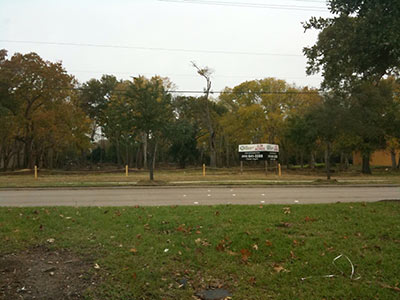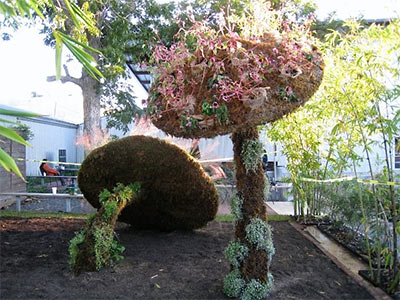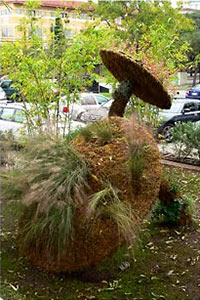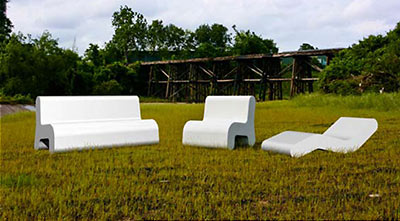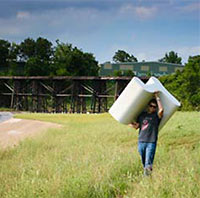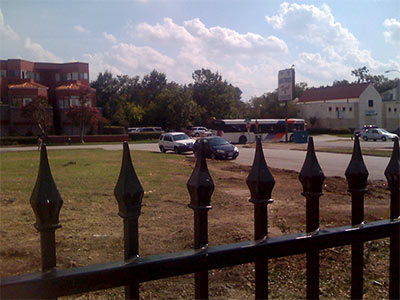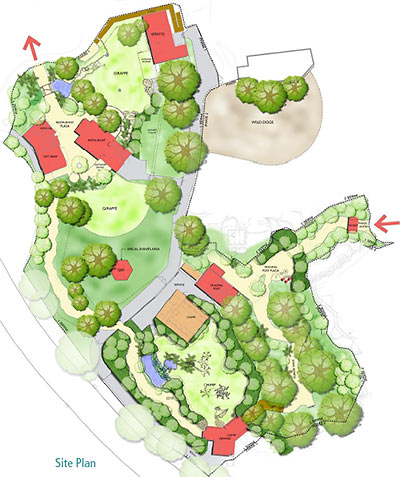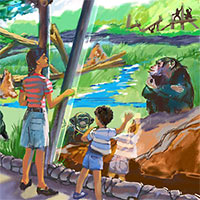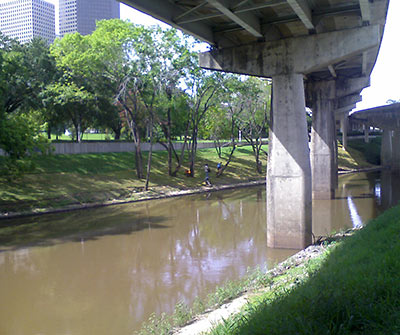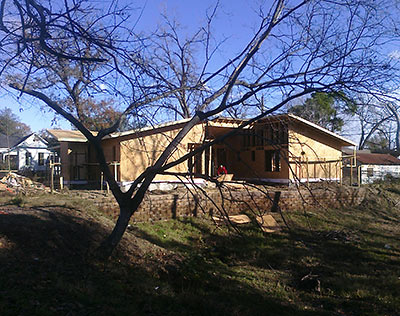
Architect and Swamplot reader Jeromy Murphy sends in a construction update on the house he and his wife — also an architect — are building for themselves at 502 Archer St. in Brookesmith, “not too far from the container house.” How’s the family project going?
Lori and I designed it together, proving that a husband/wife architecture team can succeed (as long as the husband just agrees to everything his architect wife wants).
One of those design decisions that came so easily: the 8-ft. Isis Big Ass Fan that’ll hang from exposed rafters on a porch overlooking a new retaining wall. The fan isn’t installed yet, but you can see the rafters in this photo:


